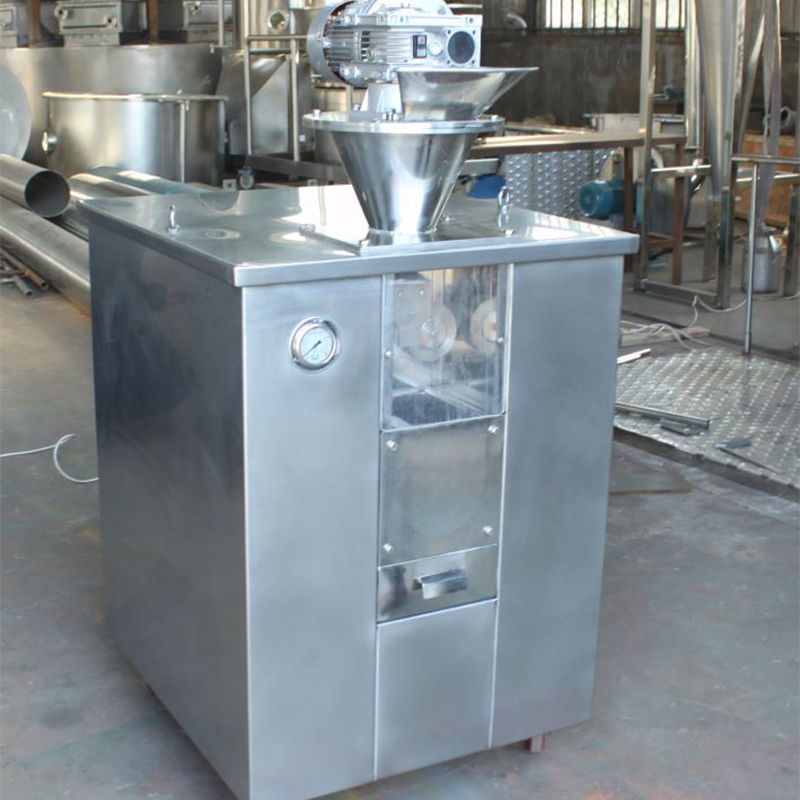The Mechanics Behind Dry Granulators: A Deep Dive into Their Functionality
What Makes Dry Granulation Unique?
At the heart of dry granulation is the idea of transforming powdery substances into larger, more manageable particles without the use of water or other liquid binders. The key to this process lies in the application of mechanical force, which is precisely where the dry granulator excels.
A typical dry granulator consists of three main components:
Feeding Mechanism: The powder is fed into the machine using a hopper or feeder system. The uniformity of the powder feed is crucial for ensuring consistent granule formation.
Compaction System: Once the powder is fed into the granulator, it is subjected to high pressure in a compacting zone. This area often contains rollers, which exert immense pressure on the powder to form sheets or ribbons of material.
Milling or Sieving Mechanism: After the powder has been compacted, the formed ribbons or sheets are broken down into smaller granules using either a milling system or a vibrating sieve. The size of the granules can be adjusted depending on the requirements of the final product.
The Process: Step by Step
Compaction: The initial stage involves feeding dry powder into the granulator. As the powder enters the compacting area, pressure is applied through rotating rollers, forcing the particles to bind together. The level of pressure applied determines the density and hardness of the resulting sheet or ribbon. This step is crucial in ensuring the granules have good flow properties and are suitable for further processing.
Sieving or Milling: After the powder has been compacted into sheets, it is passed through a sieve or mill. This step breaks down the compacted material into granules. The size of these granules is determined by the sieve mesh size or the milling equipment's settings. These granules are then used as input material for tablet presses or other packaging machinery.
Final Product: The granules produced are typically uniform in size, which is essential for maintaining consistency in the final product. Whether it’s pharmaceutical tablets or food ingredients, uniform granules ensure that each dose or portion delivers the same quality.

Why Choose Dry Granulation?
Dry granulation offers several advantages over traditional methods like wet granulation, particularly when working with heat-sensitive or moisture-sensitive materials. Here are some key benefits:
No Moisture, No Heat: Since no liquid binder or drying process is involved, there is minimal risk of degradation to the active ingredients due to heat or moisture. This makes dry granulation ideal for handling sensitive materials such as vitamins, enzymes, and active pharmaceutical ingredients (APIs).
Cost-Effective: The lack of drying equipment and additional binders can significantly lower production costs. Moreover, the reduced processing time enhances overall operational efficiency.
Uniformity and Consistency: Dry granulation helps ensure that the size and density of granules remain consistent, contributing to the uniformity of the final product.
Scalability: Dry granulators are scalable, making them suitable for both small-scale pilot production and large-scale industrial manufacturing.
Key Industries Benefiting from Dry Granulators
Pharmaceutical Industry: Dry granulators are commonly used in pharmaceutical manufacturing for producing tablets, capsules, and other oral dosage forms. The ability to maintain the integrity of sensitive ingredients is crucial in ensuring product efficacy and safety.
Food Industry: In food production, dry granulators are used to create granules for ingredients such as flavorings, spices, and powders. The granules produced ensure better flow properties, which is important for accurate portion control and consistent product quality.
Cosmetic Industry: In the production of powdered cosmetics and other formulations, dry granulators provide a way to create consistent, high-quality granules for blending and packaging.



 English
English русский
русский عربى
عربى Türk
Türk




